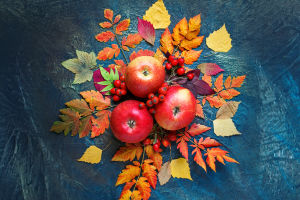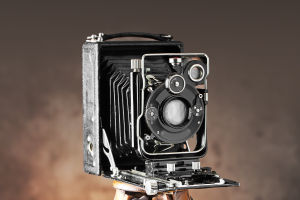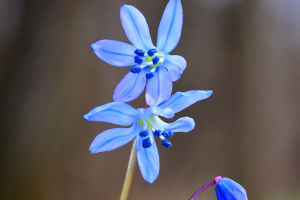Photography is the art of "light and shadow." It's safe to say that a great photo relies heavily on the way light and shadow are captured.
If you want to take breathtaking photos that truly showcase this interplay, learning how to manipulate light is essential. We're here to help you understand how light can transform your photos and make them more striking.
Understanding Light Placement
When it comes to photography, the angle at which light hits a subject can dramatically affect the final image. Light sources can be classified into different types based on their angle, including front light, side light, backlight, side-backlight, top light, and bottom light. Understanding each of these types will allow us to creatively use light to capture unique shots.
1. Front Light
Front light is one of the least popular lighting setups for photography because it often produces flat images without much depth. However, when you choose bright, colorful subjects with rich textures, this flat lighting can help highlight their colors and details. You can even enhance the image further in post-production by turning it into a monochrome image, drawing attention to the lines and structure of your subject.
2. Backlight
Backlighting creates dramatic and visually stunning effects. This lighting can produce phenomena like sunstars (when the sun appears as a starburst) or even rays of light shining through objects like leaves. The key when shooting in backlight is to control the lens flare to avoid distractions. You can also create silhouettes by intentionally underexposing the subject, emphasizing their shape and outline rather than the details.
3. Side-Backlight
Side-backlight is a favorite lighting choice for many photographers because it helps bring out the depth and dimension of an image. This type of light often results in striking, well-defined shadows that enhance the textures and shapes of the subject. It can give photos an artistic and dramatic feel.
4. Top Light
Top light, or "high light," occurs when light comes from directly above the subject. This type of light can emphasize the layers and dimensions of an object, making it ideal for capturing landscapes or architectural features like tall towers and dense forests. The top-down illumination creates distinct shadows beneath objects, revealing their structure and height.
5. Bottom Light
Bottom light is a dramatic and unusual light source, often used for specific effects. It can create a “spooky” or "haunting" look, especially in portrait photography, by casting long shadows and highlighting unusual features. For example, using bottom light in a portrait can reduce shadows on the face, emphasizing a person's unique features, such as cheekbones or jawlines. It's also effective for reducing shadowy areas under the eyes or around the neck.
6. Diffused Light
Diffused light is soft and even, reducing harsh shadows and highlights. It's perfect for creating calm, peaceful images that exude tranquility. This type of light doesn't produce the stark contrast we associate with dramatic lighting, but instead provides a more subdued, atmospheric feel. It's great for showing spatial depth and adding a sense of stillness to the photo.
7. Narrow Light – Fine Composition
Narrow light occurs when an object blocks part of the light, creating shadows on the subject. This lighting style helps simplify the composition by highlighting the subject and drawing attention to specific details. Common objects like blinds, curtains, or plants can be used to filter light and cast interesting shadow patterns on your subject, adding texture and visual interest to your image.
Using Point Light Sources
Point light sources, such as streetlights or reflections off a body of water, create sharp contrasts between light and shadow. These small light sources can add drama and focus to a photograph. If you use a small aperture on your lens, you can capture the light source itself as a starburst, which can give your photos a dreamy, magical feel.
Reflections as a Visual Tool
Reflections are another powerful technique in light and shadow photography. Water, mirrors, or even the surface of a smartphone can create beautiful reflective images. The reflections add depth and intrigue to your composition. Using surfaces that aren't perfectly flat, such as curved mirrors, can create interesting distorted effects that add creativity to your shots.
Using Shadows Creatively
Shadows, often overlooked, play a significant role in photography. While we tend to focus on the subject, shadows can be used to strengthen the overall composition. Shadows help create contrast, focus, and depth in the photo. For example, the use of shadows can separate the subject from the background, highlight details, or create a mood. You can even use shadows to add a sense of scale or expand the scene.
Light and Shadow Contrast
Contrast between light and dark areas in an image creates depth and visual interest. This technique is commonly used to make a subject stand out, enhancing their presence within the photo. For example, you can position a brightly lit object against a dark background to draw attention to it. Alternatively, you can create silhouettes by placing the subject in front of a strong light source, allowing the contrast between light and shadow to form a bold visual statement.
Warm vs. Cool Light
Warm and cool light can create different moods in your photographs. Warm light, like the golden hues during sunset, can evoke feelings of warmth and comfort. Cool light, like the bluish tones of early morning, can give a sense of calm and serenity. Using these contrasts in the same image can create dynamic tension, drawing attention to different parts of the scene and adding visual interest.
Conclusion: The Magic of Light and Shadow
Mastering the use of light and shadow is essential for taking stunning photos. By understanding how light interacts with your subject, you can create more compelling and visually appealing images. Whether it's playing with angles, contrasts, or reflections, the possibilities are endless. Keep experimenting and let your creativity shine, Lykkers!


